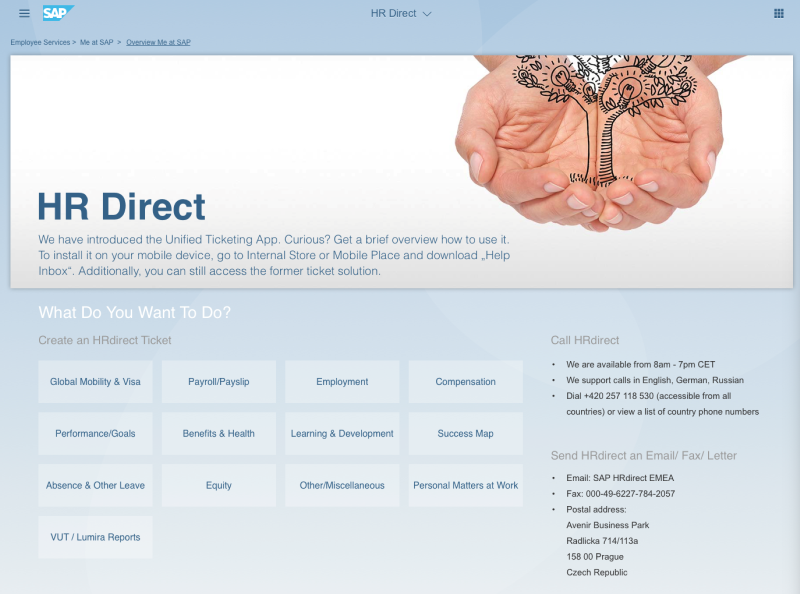3 Cloud-Smart Strategies for SAP Customers
by Diana Adjadj, writer, editor at TrustMyPaper
One of the challenges brought by the COVID-19 pandemic is the need for a unified data ecosystem for businesses to operate remotely. Cloud technology can be an effective way to resolve this challenge.
Many companies have already started working on implementing a cloud solution.
Explore related questions
According to Hosting Tribunal:
- 90% of companies are using cloud technology to some capacity
- Businesses run about 41% of their workloads in the private cloud
- 42% of companies say they adopted cloud technology to access data from anywhere.
SAP Cloud Platform is one of the solutions that can create a unified environment for all business processes, with over 10,000 enterprises actively using it.
We’ll list three major strategies to employ cloud-smart SAP solutions to help your business get through the uncertain times.
1. Accelerate Digital Transformation of Your Business
Digital transformation is the adoption of digital technology to upgrade product or service delivery to customers. This process involves fundamental changes in business processes to make them faster and more effective.
Here are examples of how SAP cloud technologies transform key business processes:
- HR. Application tracking systems (ATS), employee onboarding tools, surveys, and other digital tools help companies choose better candidates faster + manage employee experience more effectively.
- Manufacturing. Cloud-driven IoT technologies like real-time asset and staff tracking can help detect issues early, identify improvement opportunities, support Lean principles, and increase manufacturing output.
- Innovation management. A dedicated SAP solution as an all-in-one platform for idea collection, discussion, and validation. You can create a culture of continuous innovation by making idea sharing easier.
- Research and development (R&D). Industry-specific cloud solutions enable the digitization of product development, compliance management, project management, and other R&D features.
As you can see, the cloud is omnipresent in every digital transformation technology and process.
Related: Survey Results – What to Expect from Supply Chain Digital Transformation?
2. Improve Staff Productivity
The competitive advantage of digital transformation is the opportunities created by the hyperconnectivity between people and data. Having access to data analytics and processes allows making better decisions to achieve instant value.
Aviad Rivlin, a director of product management at SAP, gave a great example of a company improving employee productivity in this post.
A global service business has built a centralized employee portal with SAP Cloud Platform, which gave access to business apps, content management features, data, and communication.
All employees, regardless of their geolocation, could log in to the portal and start working. This also makes the portal an excellent solution not only for global companies but those with remote teams created due to the pandemic.
By improving employee experience this way, the company:
- Allowed employees to access data from any device
- Made it easier to find information and tasks
- Improved web security thanks to single-sign-on and role-based access to business apps and data.
Ultimately, the company provided employees with more personalized experiences, which helped them to work more effectively.
Here’s a view of an employee portal for an HR department. It offers access to the most common HR tasks from one place.

Source: SAP Blog
All the employee has to do is click a task and start working.
No wonder that 71 percent of executives say that digital transformation helped them to attract and retain talent, according to this survey. The cloud-based employee portal is an excellent example of a strategy to improve both employee productivity and experience.
3. Boost Operational Efficiency
“Our financial departments were saying that SAP needs to run on-premise, so we were considering staying on premise… Now, they’re pushing for cloud very hard.”
This is what Timo Salzsieder, the CIO/CSO of Metro, has said in a recent interview about using Google Cloud to run SAP S/4HANA business data platform.
According to Salzsieder, the international network of supermarkets moved all SAP solutions – merchandise, finances, retail – to cloud, and was able to improve their operational efficiency.
Metro, like many other companies, had data and information everywhere, which led to poor insights and inefficient processes.
How can cloud-based business data platforms help to achieve that?
- Consolidate and harmonize data. Large international companies have huge amounts of data in legacy systems. Cloud solutions like SAP S/4HANA create a single source of information for everyone to access, thus improving employee, leadership, and supplier experience and operations.
- Boost performance. An Enterprise Resource Planning (ERP) system with SAP S/4HANA provides the necessary data to enhance insight-driven decision making, accelerate the adoption of innovative practices, and integrate new acquisitions faster.
- Standardize and orchestrate key business processes and functions. SAP S/4HANA helps with removing redundant and inefficient process breaks, flows, and provides standardization points and benchmarks to streamline processes and demonstrate the value of changes.
- Improve real-time data and process visibility across the organization. With data standardized and freely available thanks to cloud, stakeholders can make better decisions and improve reporting capabilities.
- Increase app stability and availability. Legacy systems are known for inconsistency with app access, which can lead to slower processes and dissatisfied customers. Running apps on a cloud gives stable access to apps that are prone to breaking down, giving an opportunity to keep processes going and avoid problems with seasonal demand spikes.
At this point, Metro is consolidating content systems of branches from around the world. Salzsieder says that the cloud will continue to drive digital transformation and operational efficiency at the company to help it stay more innovative and competitive.
Ultimately, companies like Metro achieve almost complete visibility into their operations and can oversee all business operations from the beginning to the end.
Conclusion
The disruption of COVID-19 brought many unexpected challenges to the business world.
However, the solutions needed to tackle these challenges are already here, and SAP Cloud is one of them. With it, businesses can accelerate their digital transformation, improve the productivity of their staff, and boost operational efficiency in general.
The ability of cloud infrastructure to support digital transformation, provide agility, access to analytics and apps, and enable innovation makes it an indispensable factor for succeeding in the business landscape.








